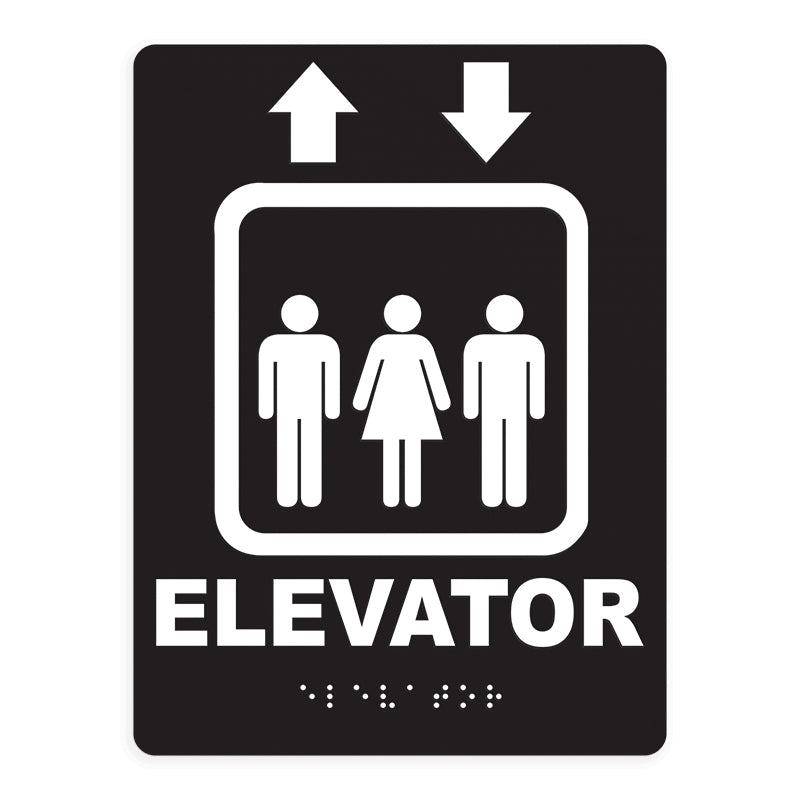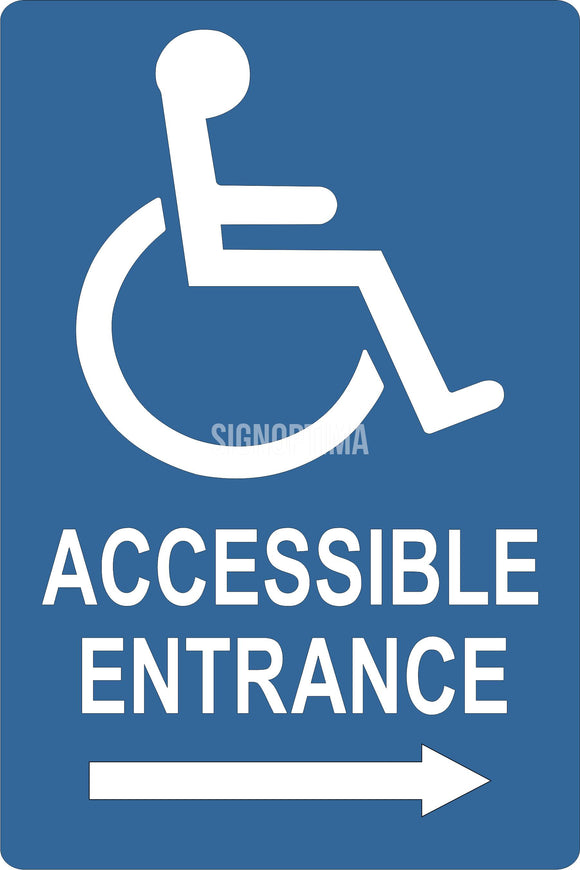Discovering Imaginative Layouts for Reliable ADA Signs
Discovering Imaginative Layouts for Reliable ADA Signs
Blog Article
ADA Signage: Guaranteeing Accessibility and Compliance in Public Spaces
ADA signage plays a crucial role in guaranteeing accessibility and conformity within public rooms, significantly contributing to an inclusive environment for individuals with handicaps. As we explore the nuances of ADA signage, from responsive features to design intricacies, it's important to take into consideration just how these components integrate to maintain the civil liberties of all individuals.
Relevance of ADA Signage
In modern culture, the value of ADA signs prolongs beyond simple conformity with legal mandates to embody a commitment to inclusivity and accessibility for all people. These signs are important in creating environments where people with specials needs can navigate public areas with the very same ease and independence as those without specials needs. By giving standard and clear details, ADA signage guarantees that everyone can access centers, solutions, and information without barriers.
The importance of ADA signs depends on its ability to boost the lifestyle for people with impairments by promoting equivalent gain access to. It eliminates the barriers that might or else prevent their capability to participate totally in community life. Furthermore, these indications serve as visible indicators of a company's dedication to variety and equality, showing broader societal worths that champion the civil liberties and dignity of all people.
Furthermore, ADA signs plays a crucial duty in public safety. By leading individuals to departures, toilets, and other crucial centers, it makes certain that all people, no matter physical capacity, can evacuate safely throughout emergencies. In summary, ADA signs is not simply a regulatory requirement however an effective tool for promoting a comprehensive and equitable culture.
Crucial Element of Conformity

Positioning is vital; indicators must be installed in places that are conveniently noticeable and obtainable. Generally, signage should be installed in between 48 and 60 inches from the ground to make sure availability for both standing and mobility device individuals. Tactile elements, such as Braille, are vital for individuals with visual problems, giving essential details in a non-visual layout.
High-contrast shades in between the text and background are essential to boost readability for individuals with low vision. The ADA mandates details comparison proportions to guarantee clarity. In addition, personality size is a key consideration, with minimal height requirements determined by the checking out distance to make certain readability from numerous angles.
Layout Considerations for Accessibility
Designing obtainable signage needs a thorough method to guarantee it fulfills the needs of all individuals, particularly those with impairments. The dimension of the message is just as vital, with ADA standards suggesting a minimal elevation based on watching distance to guarantee clarity.
Contrasting shades in between message and background are crucial for visibility, especially for individuals with aesthetic problems. A high contrast ratio assists differentiate the message from its history, boosting readability under numerous illumination problems. In addition, responsive elements, such as Braille and raised characters, are important for individuals that are blind or have reduced vision. These components must be situated at a regular elevation and placement to ensure very easy accessibility and understanding.
Additionally, the placement of signage plays a considerable function in ease of access. Signs should be installed in areas that are conveniently obtainable and unobstructed. Ensuring that signs is placed at proper heights and angles enables all customers, consisting of those utilizing wheelchairs, to connect with them successfully.
Usual Errors to Avoid

One more prevalent mistake is the incorrect positioning of signage. ADA standards specify specific height and area demands to make certain that indications are reachable and quickly visible by all individuals, consisting of those utilizing mobility devices. Disregarding these guidelines not just hampers availability but likewise risks non-compliance with legal requirements.
Additionally, inadequate comparison between message and history is a frequent oversight. Appropriate contrast is essential for readability, view it now especially for people with low vision. Designers often choose colors that are visually enticing but lack the essential contrast, rendering the text hard to discern.
Lastly, some designers stop working to include responsive elements, such as Braille, which are important for people that are blind. Leaving out click to read these functions not just causes non-compliance with ADA laws but also restricts gain access to for a sector of the populace that counts on responsive details.
Future Trends in Signage
Developments in innovation and boosting recognition of inclusivity are forming the future fads in signs design. As society becomes much more mindful of diverse requirements, the combination of clever modern technologies right into signs is obtaining traction. Digital signage, as an example, is developing to consist of real-time updates and interactive features, which can be important in supplying vibrant info in public areas. These signs typically integrate touch screens or gesture-based controls, enabling customers to browse material tailored to their specific requirements.
One more emerging pattern is the usage of increased truth (AR) to boost customer experience. AR-enabled signs can overlay digital information onto the physical setting, offering aesthetically impaired people with auditory or haptic feedback. ADA Signs. This modern technology not only boosts you could look here availability but likewise creates an appealing experience for all customers
Sustainability is likewise a substantial aspect affecting signage fads. Environmentally friendly products and energy-efficient lighting services are being focused on to line up with global environmental objectives. Moreover, improvements in products science are resulting in the growth of more weather-resistant and durable signs.
Verdict
ADA signs plays an important function in ensuring access and conformity within public spaces by incorporating responsive components, high-contrast colors, and calculated positioning. The adherence to ADA criteria not just facilitates safe navigation for individuals with handicaps yet additionally signifies an organization's dedication to diversity and inclusivity. By avoiding common errors and welcoming future fads, public rooms can proceed to progress these values, making sure that the legal rights and dignity of all individuals are appreciated and maintained.
ADA signs plays a crucial duty in assuring access and conformity within public areas, significantly adding to an inclusive atmosphere for people with handicaps. As we explore the nuances of ADA signage, from tactile functions to create complexities, it's vital to consider just how these aspects integrate to promote the rights of all customers.In contemporary society, the value of ADA signage expands beyond mere conformity with lawful mandates to personify a dedication to inclusivity and ease of access for all individuals. By offering standard and clear information, ADA signs makes sure that everyone can access centers, services, and information without obstacles.
ADA signage plays a vital duty in ensuring accessibility and conformity within public spaces by integrating tactile components, high-contrast colors, and strategic positioning. (ADA Signs)
Report this page